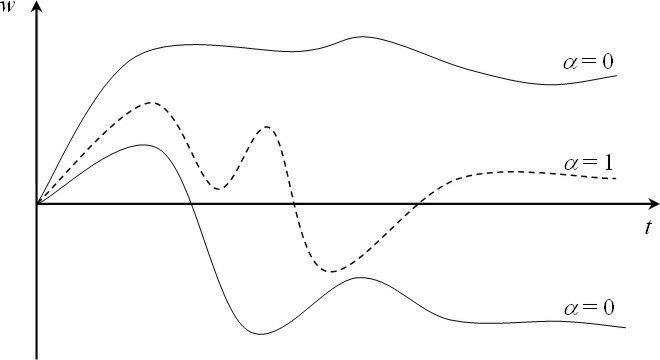
engineering & technology publications
ISSN 1759-3433
PROCEEDINGS OF THE EIGHTH INTERNATIONAL CONFERENCE ON COMPUTATIONAL STRUCTURES TECHNOLOGY
Seismic Response of Structures with Uncertain Parameters
1Department of Concrete Structures,
2Department of Mechanics,
Faculty of Civil Engineering, Czech Technical University in Prague, Czech Republic
The other well-established approaches are based on the statistics, which in its nature is more rigorous as it tries to cover the objective information gathered over a period of time. This approach can be found at the later stages of design, mostly the reliability assessment. Of course, in order to achieve a reliable assessment, a considerably large amount of data needs to be gathered. Here, a close form of cooperation between the designer and the contractor is appreciated. But the real state of the matter is, this viewpoint is based on the situation in the Czech Republic, that if the designer and the contractor are not of the same body, each side tends to keep the detailed information to itself. This may transpire in the assessment of material parameters, when the contractor allows only a limited access to the data it possesses, which yields rather subjective estimation of material parameters, such as the modulus of elasticity, strengths, and especially their evolution over time.
Möller and Beer presented a concise approach to the reliability assessment, [1], which takes into account the effect of subjectivity quantified with help of the fuzzy set theory, known as the fuzzy randomness.
The work presented in this paper describes an approach to the very early stage of design, when any additional information related to the material properties, geometry, supports and loading can save time spent with unnecessary redesigning of a particular structural member or the entire structure. The proposed approach has been presented in an example of design of reinforced concrete structure resistant to seismic loading using the response spectrum method, [2]. In this paper, the approach to the seismic design using another numerical method, the direct step-by-step integration, [3,4], is presented. The quantities considered as fuzzy are the material parameters, while the ground motion accelerogram is taken as crisp at this stage. However, the material uncertainty transpires in the resulting displacements and accelerations of the structure. This effect and the way of viewing the results are explained with respect to a simple example of undamped free vibration. The method of the direct integration with a realistic crisp ground motion accelerogram is also explained.
An example of possible distribution of displacement obtained by the direct integration method is shown in Figure 1.
- 1
- Möller, B. and Beer M., "Fuzzy Randomness: Uncertainty in Civil Engineering and Computational Mechanics", Springer, 2004.
- 2
- Štemberk, P. and Kruis, J., "Fuzzy Dynamic Structural Analysis of 2D Frames", Proc. of the Tenth International Conference on Civil, Structural and Environmental Engineering Computing [CD-ROM]. Stirling: Civil-Comp Press Ltd, 2005. doi:10.4203/ccp.81.225
- 3
- Bathe K.J., "Finite Element Procedures", Prentice-Hall, Inc.,1996.
- 4
- Bittnar, Z. and Šejnoha, J., "Numerical Methods in Structural Mechanics", ASCE Press, 1996.
purchase the full-text of this paper (price £20)
go to the previous paper
go to the next paper
return to the table of contents
return to the book description
purchase this book (price £140 +P&P)
